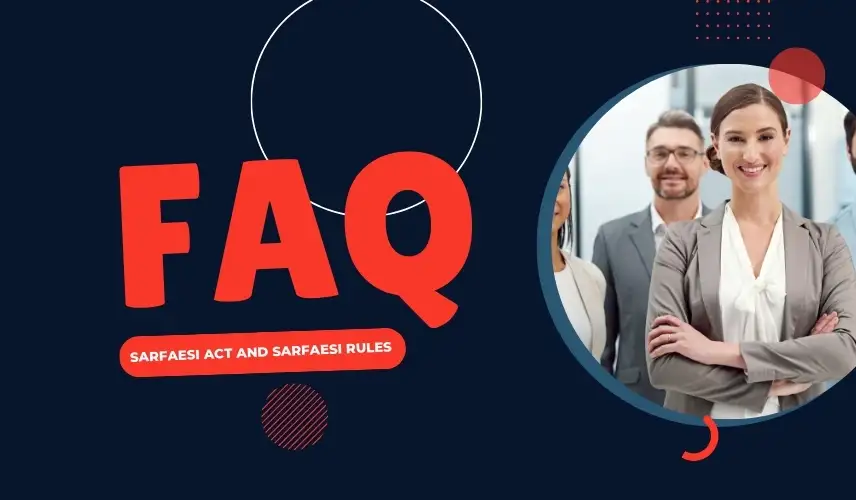
FAQ About Taking Possession With the Help of District Magistrate/Chief Metropolitan Magistrate Under Section 14 of the Sarfaesi Act, 2002
Answer : The affidavit to be filed by the Secured Creditor along with the application under Section 14 of Sarfaesi Act, 2002 should contain the under-mentioned details:
the aggregate amount of financial assistance granted and the total claim of the Bank as on the date of filing the application;
- ii) the borrower has created security interest over various properties and that the Bank or Financial Institution is holding a valid and subsisting security interest over such properties and the claim of the Bank or Institution is within the limitation period;
iii) the borrower has created security interest over various properties giving the details of properties.
(iv) the borrower has committed default in repayment of the financial assistance granted aggregating the specified amount;
(v) consequent upon such default in repayment of the financial assistance the account of the borrower has been classified as a non-performing asset;
(vi) affirming that the period of sixty days notice as required by the provisions of sub-section (2) of section 13, demanding payment of the defaulted financial assistance has been served on the borrower;
(vii) the objection or representation in reply to the notice received from the borrower has been considered by the secured creditor and reasons for non-acceptance of such objection or representation had been communicated to the borrower;
(viii) the borrower has not made any repayment of the financial assistance in spite of the above notice and the Authorised Officer is, therefore, entitled to take possession of the secured assets.
(ix) that the provisions of the Sarfaesi Act and the rules made thereunder had been complied with.
Categories
Related FAQs
-

FAQ About Essential Pre- Conditios for Taking Sarfaesi Action
Know more about frequently asked questions [...]
-

FAQ About Demand Notice Under Section 13(2) of Sarfaesi Act, 2002
Know more about frequently asked questions [...]
-

FAQ About Borrower’s Representation/ Objection Against Section 13(2) Notice
Know more about frequently asked questions [...]
-

FAQ About Non-performing Assets
Know more about frequently asked questions [...]
-

FAQ About Assignment of Loan Account to Asset Reconstruction Company
Know more about frequently asked questions [...]
-

FAQ About Possession of Immovable Property
Know more about frequently asked questions [...]
-

FAQ About Sale of Immovable Property Under Sarfaesi Act, 2002
Know more about frequently asked questions [...]
-

FAQ About Redemption
Know more about frequently asked questions [...]
-

FAQ About Possession and Sale of Movable Properties
Know more about frequently asked questions [...]
-

FAQ About Application to Debts Recovery Tribunal Under Section 17 of the Sarfaesi Act, 2002
Know more about frequently asked questions [...]
-

FAQ About Appeals to Debts Recovery Appellate Tribunal Including About Pre-deposit
Know more about frequently asked questions [...]
-

FAQ About Taking Possession With the Help of District Magistrate/Chief Metropolitan Magistrate Under Section 14 of the Sarfaesi Act, 2002
Know more about frequently asked questions [...]
-

FAQ About Eviction of Tenants Under Sarfaesi Act, 2002
Know more about frequently asked questions [...]
-

FAQ About Powers of Debts Recovery Tribunal
Know more about frequently asked questions [...]
-

FAQ About Powers of Debts Recovery Appellate Tribunal
Know more about frequently asked questions [...]
-

FAQ About Registration of Security Interest, That is Mortgage/hypothecation
Know more about frequently asked questions [...]
-

FAQ About Assets for Which Sarfaesi Action Can Not Be Taken Including Agricultural Land
Know more about frequently asked questions [...]
-

FAQ About Taking Over of Management
Know more about frequently asked questions [...]
-

FAQ About Misc. Provisions of Sarfaesi Act, 2002
Know more about frequently asked questions [...]
